I’ve just returned from “taking the waters” here in Bath, and I’m feeling relaxed and reinvigorated.
Bath Spa traces its roots to the CeltIc goddess Sulis. Sulis was worshipped here by the Celts before the Romans began their conquest of Britain in 43 CE. When the Romans arrived they combined the Celtic goddess Sulis with their goddess Minerva, and called the deity Sulis Minerva. Minerva had been equated with the Greek goddess Athena since the second century BCE. Sulis Minerva, like Athena, was a goddess of healing, though also venerated, like Athena, for her knowledge.
Sulis, Celtic goddess of the springs of Bath. CC
Look just how far the Greek culture spread from Athens, and how Athena was merged first into Minerva and then into Sulis. The nice thing about the Greek gods is that they weren’t perfect. They were always fighting and making mistakes. The goal of Greek boys and men was to be strong, like the gods. The gods served as role models. And the Greek gods had a good time, too, with banquets and parties. The Olympics were very “religious,” in the sense that they were performed “for the gods and in honor of the gods.”
In addition to her role as a healing mother goddess, Sulis Minerva could also provide justice to those wronged. At least 130 inscribed “curse tablets” have been found in the springs. These tablets ask Sulis to do various things.
For example, one tablet found at Bath reads: "Docimedis has lost two gloves and asks that the thief responsible should lose their minds and eyes in the goddess' temple." Tomlin, Roger (1988). Tabellae Sulis: Roman inscribed tablets of tin and lead from the sacred spring at Bath. Oxford University Committee for Archaeology. pp. 114–115.
The spa here at the Gainsborough Hotel is visible out the window of our hotel room. The hotel surrounds the spa, which is covered by an opaque glass roof. The main pool features a jacuzzi-like stream of water that falls down on you. It feels like the chiropractor is working your back.
After soaking for a bit I massaged myself under that stream, then tried one of the hot rooms. Ten minutes later I was back in the big pool, then hit the sauna, showered, hit the hot pool, then stood in the ice room. By now my skin was tingling and my body was relaxed. I hit the hot pool for a few minutes, showered, then put my robe back on, slipped into my sandals, and walked back up to our room. Swimsuits are required.
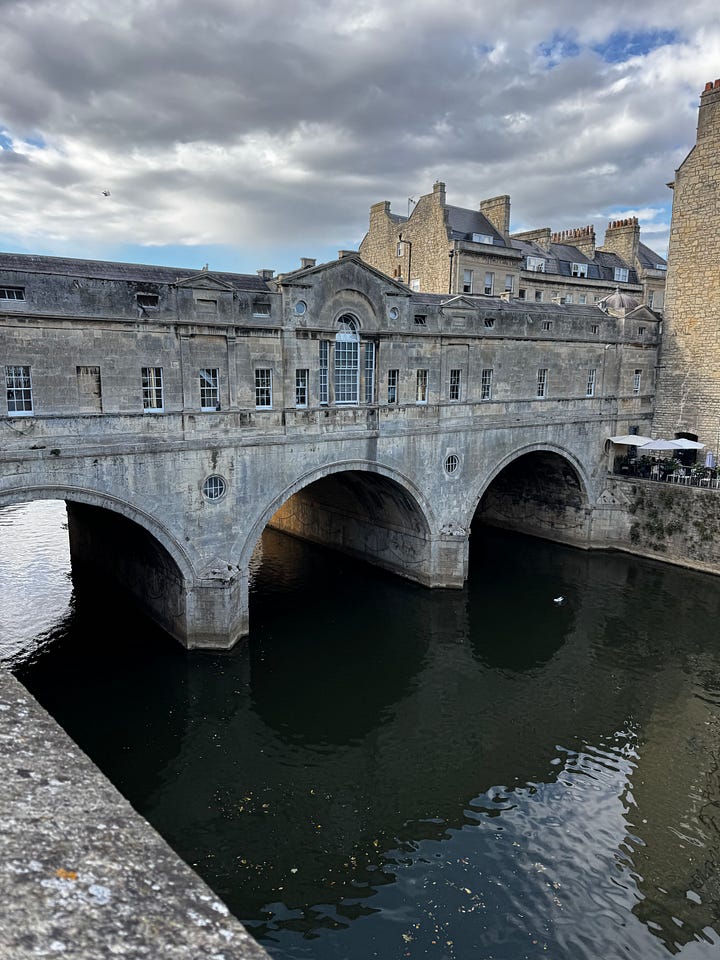
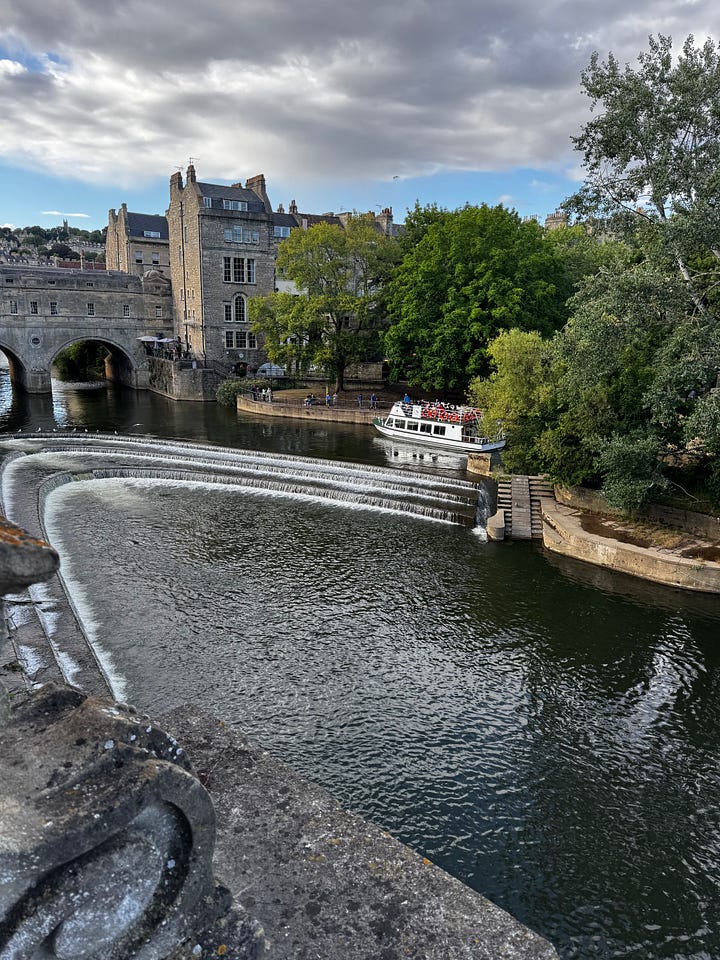
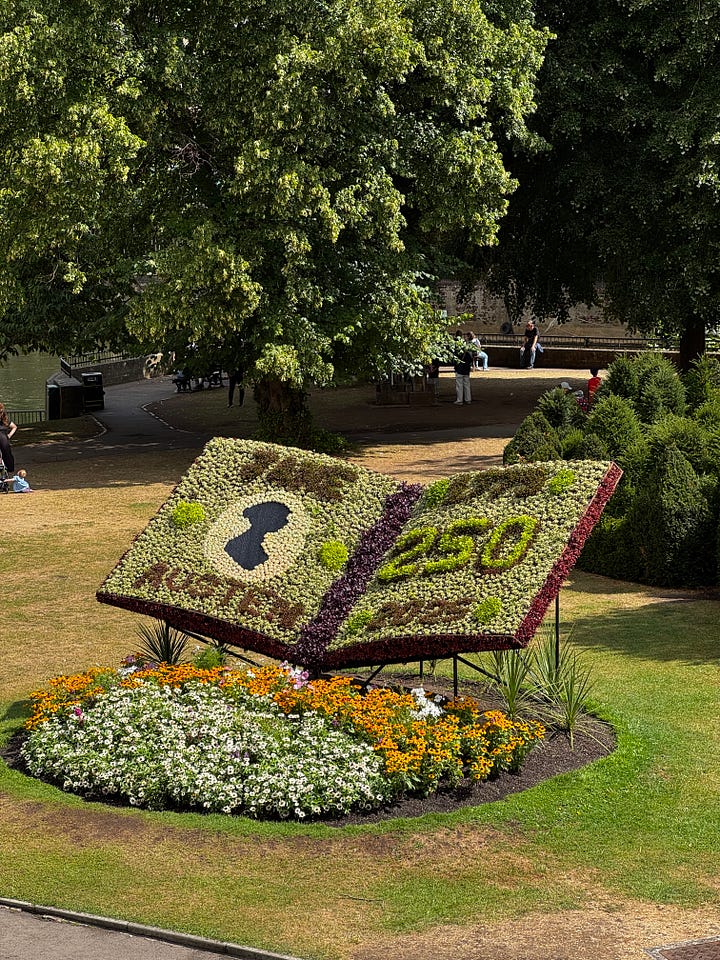

We’ve had a lovely stay here in Bath. Yesterday we explored the upper town, the Circle and the Royal Crescent. It was Sunday and I heard a band. We walked down the hill from the Royal Crescent into the Botanical Gardens, where the Bath Brass Band was playing in a fantastic old band shell. It was half the size as the one at the Toledo Zoo, and tuned perfectly for the setting. Sunday Afternoon Brass Band Concert (video on YouTube).
Here are a few more YouTube videos we now have up from Greece:
Athens Comes Alive on a Summer Evening
The Frescoes from Thera (Santorini) - Archeology Museum of Greece
We listened to a couple of numbers, which included some great marches, then wandered back down the hill, eating at an amazing little Greek restaurant outside on the street. People here are generally friendly, though most of the ones we’ve met are tourists like us.
The exception were some people we met last night outside the Holburne Museum. We enjoyed a hilarious version of Jane Austen’s Pride and Prejudice at the Garden Theatre Festival. There were about a hundred of us, scattered under a makeshift tent on the lawn, most in lawn chairs you rent in advance for 4 pounds (one of the few bargains I’ve seen in this expensive city).
The talented cast had us in stitches from the opening scenes. There are at least nine or ten characters in the play, but only 4 performers, with men playing women and vice versa. Every now and then they threw in a song or two, and even recruited three audience members to fill in roles of two of the daughters and the postman.
You can bring your own food and drink, or buy something there. Our audience neighbors were natives of Bath, and had spent time in Hong Kong and Mumbai, so we had a lot to chat about.
Today we toured the Holburne Museum itself. It houses an impressive collection, as well as traveling exhibits, including the current exhibition of JMW Turner watercolors. The watercolors foretell Impressionism. I took way too many pictures. Perhaps I’ll put together a slide show.
The one picture from the museum though that I really wanted to show you is this one:
The great grandfather of the Museum’s name sake was a plantation owner in Barbados that relied exclusively on the labor of African Slaves. This book is missing most of its pages, which contained the names, ages, and disposition of the slaves of the plantation.
Much of Bath was built with profits from the slave trade.
Meet Robert Craggs Nugent, later Earl Nugent (1702-1788). An Irish peer and MP for Bristol, he was instrumental in passing the 1750 Act for the Regulation of the Slave Trade, which dismantled the Royal Africa Company and created the African Company of Merchants. This expanded the transatlantic slave trade of Bristol merchants to an industrial and unprecedented scale in the second half of the 18th Century.
If you ever doubted that Great Britain was a slaving country, read this act, linked above. And, necessarily, at that time English Colonies of North America were English subjects, so this Act controlled the shipment of slaves to the Colonies.
[Note to self: Look for books about this law and it’s effects on North America and on the Slave Trade in general. Who profited the most? (We know who suffered the most.)]
The money here in Bath was made by the plantation owners, ship owners (many of whom were slavers), captains, and merchants of the 18th and 19th centuries. And wow, did they make money. The buildings are all constructed of local limestone called Bath Stone. The honey-colored stone gives a unique, uniform look to the buildings of this town. Bath Stone was formed by marine sediments laid down during the Jurassic Period (195-135 million years ago).
We also visited the Bath Abbey today, the last gothic cathedral built in England, whose foundations date to the 7th Century. It was rebuilt in the 12th and 16th centuries. Lots of slavers and naval captains are buried here.
This Monument marks the grave of Sir William Baker, a Director of the East India and Governor of the Hudson Bay Company. The monument represents the British Empire. Baker owned plantations in South Carolina and Barbados, where at least 415 African slaves worked.
I’m learning that if I don’t take time to write up the highlights while I’m on a trip they often don’t get written. I hope these little snapshots are enough to convince you that the City of Bath Spa is worth at least three days, and more if you can. There are many other places to explore nearby, including Bristol and Stonehenge.
I really like this area. Our new friends from Bath claim the weather here in winter is nice. We’ll try to get back here in the winter and test out that claim. Certainly the summers are lovely, the cool temperatures a sharp contrast to the heat of Athens.
I will say, though, that Bath is pretty pricey. Things generally cost a lot more than they do in the States, especially more than in the Midwest. But you could make a very good argument that it’s worth the price. Yes, it’s a great city.
Now on to London! I’ve been planning my visit to the British Museum, booking a free timed-entry ticket for both Wednesday and Thursday. I hope to do all of the Greek rooms (and of course the Elgin Marbles), then visit the Egypt collection. I’ve been there before, but with both Egypt and Greece trips fresh in my mind I’m excited to visit again.
One of our two Grandkid tribes will be meeting us in London, after a few days in Santorini. I’m anxious to hear the details of their visit.
Thanks for traveling along!~




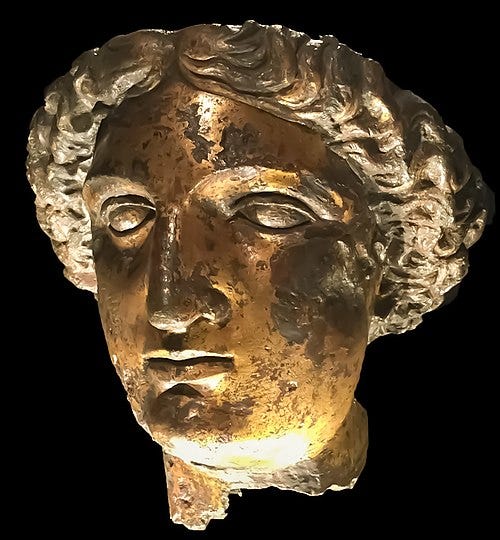


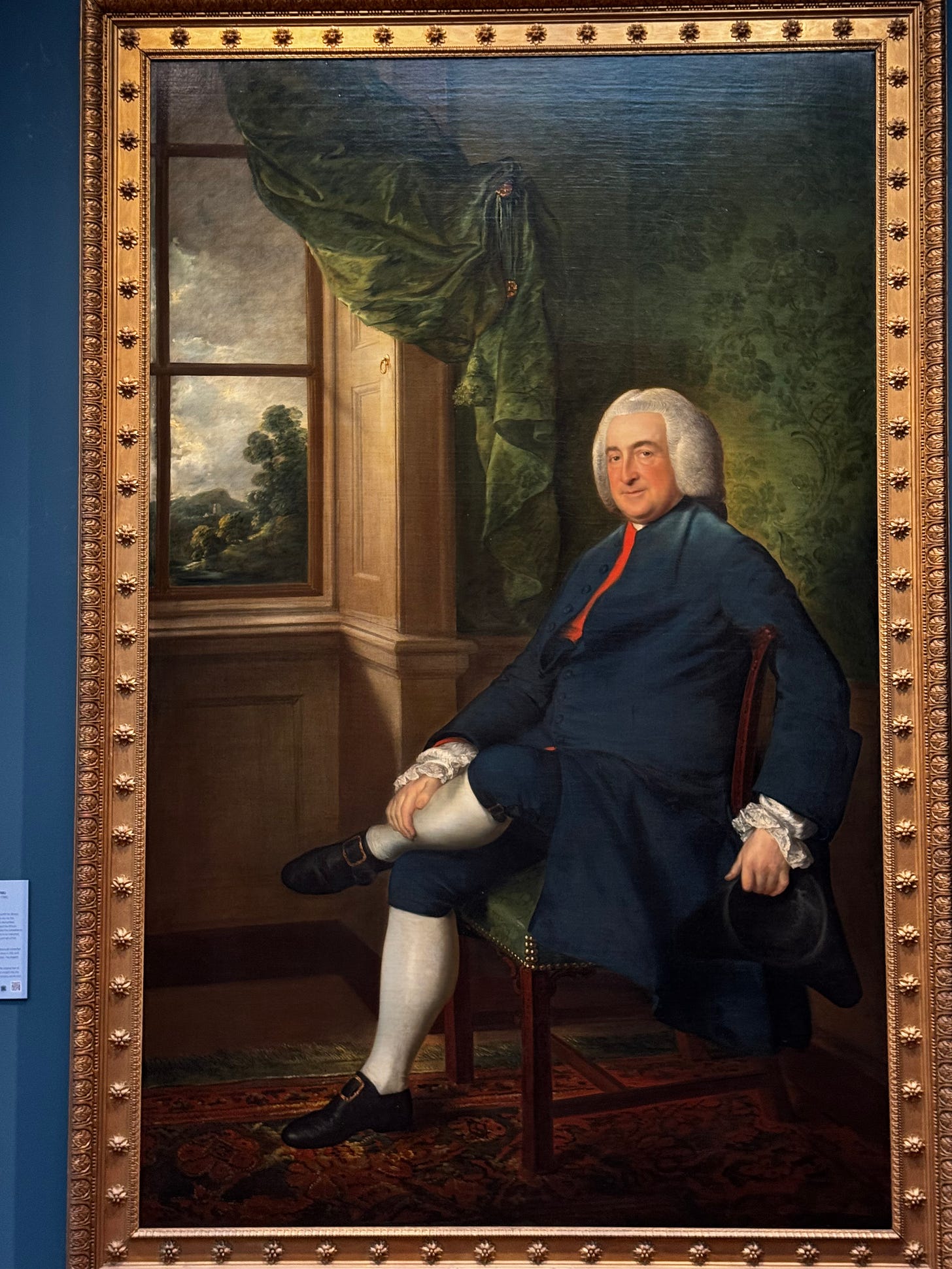
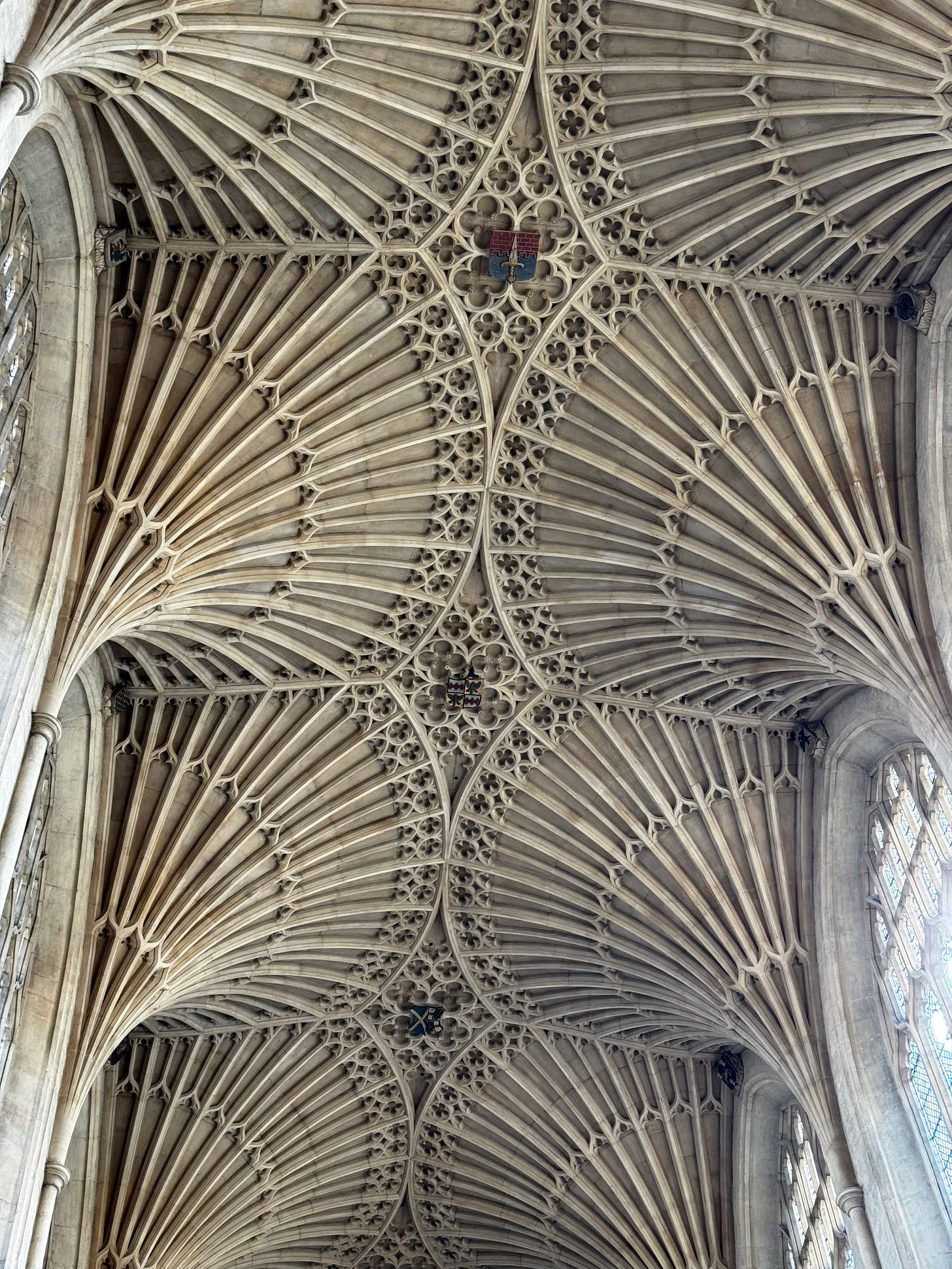
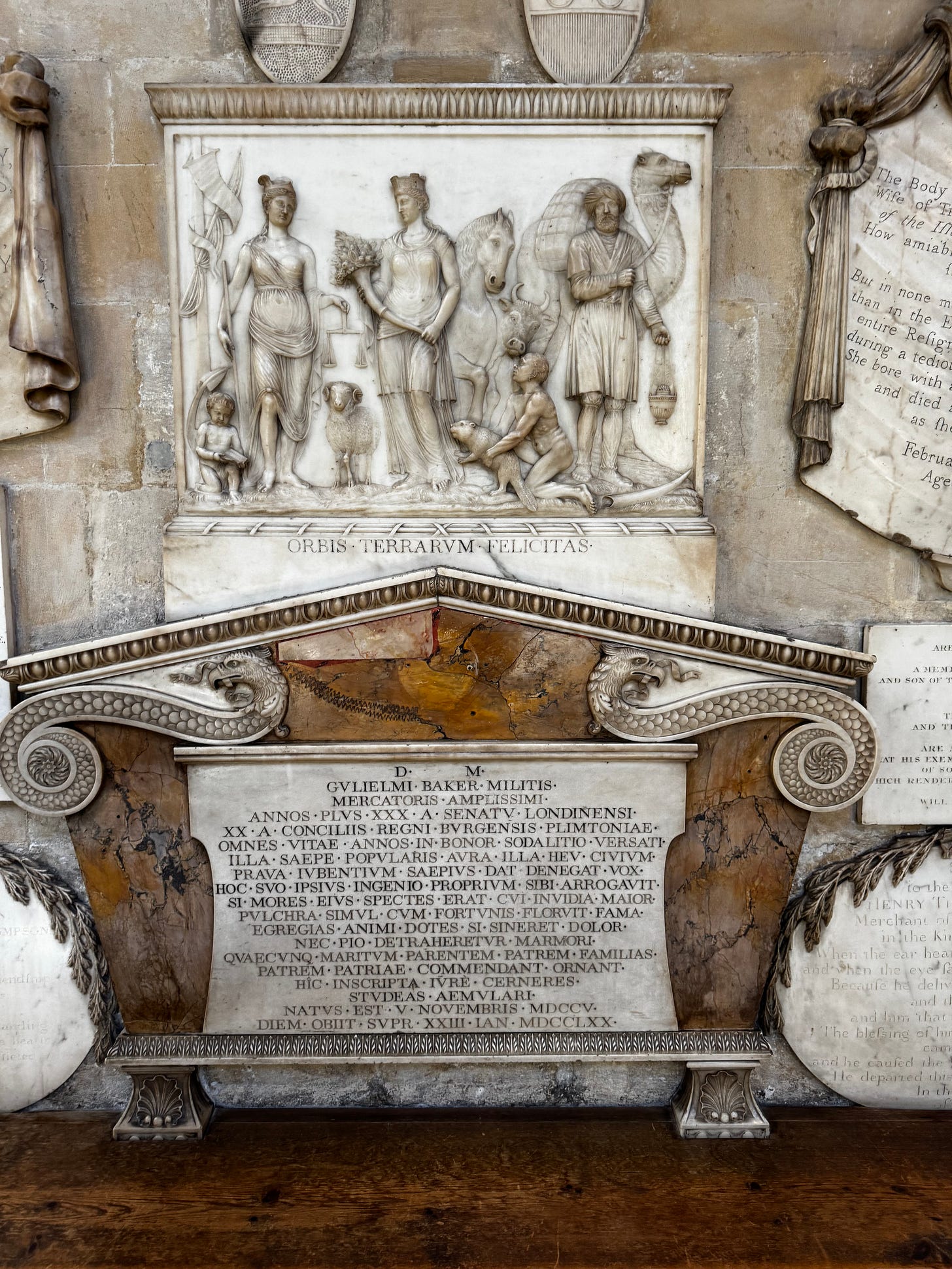
Terrific videos of Athens!
David, I'm loving your travelogue and commentary. When you're in London, see if you can fit in a visit to the British Library, one of my favorite places in the world. It might not completely fit in with the Greek theme, but it does have multiple copies of the Magna Carta! Re slavery, there was an exhibit in the Netherlands during COVID which showed how the Dutch wealth and economy was based on slavery. Apparently it was a shock to the Dutch since there were very few slaves ever in the country.